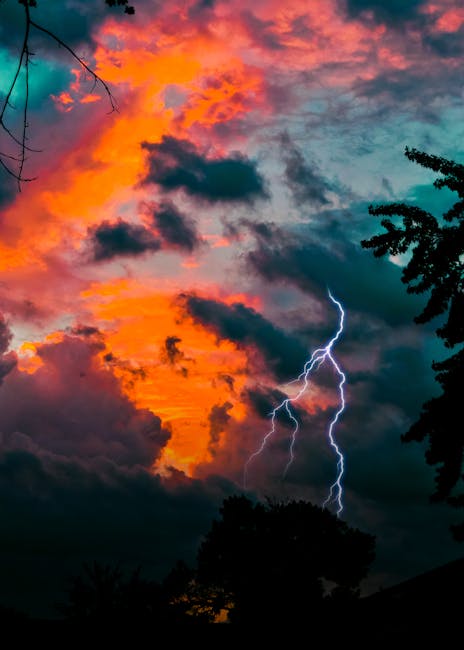Chicago Dust Storms: A Comprehensive Guide to Causes, Impacts, and Safety
Chicago Dust Storms: A Comprehensive Guide to Causes, Impacts, and Safety
Understanding Chicago’s Dust Storm Vulnerability
While not as frequent or intense as in arid regions, Chicago and the surrounding areas are susceptible to dust storms, albeit often milder versions manifesting as hazy conditions or reduced visibility. These events are typically not the massive, swirling sandstorms often depicted in movies but can still significantly impact air quality, transportation, and public health. Understanding the factors contributing to these occurrences is crucial for preparedness and mitigation.
Meteorological Conditions
Several meteorological conditions can contribute to dust storms in Chicago. High winds, particularly those associated with strong weather systems like cold fronts or thunderstorms, play a primary role. These winds can lift dust and other particulate matter from exposed soil, construction sites, and agricultural fields into the atmosphere. The presence of dry, loose soil, exacerbated by drought or recent land disturbances, enhances the likelihood of dust mobilization. The absence of significant rainfall further contributes to dry conditions, making the soil more susceptible to wind erosion.
Geographic Factors
Chicago’s location near the Great Lakes and its proximity to agricultural lands influence its susceptibility to dust storms. While the Lakes themselves generally limit the extent of widespread dust storms, strong winds can transport dust from more distant sources, such as agricultural regions in Illinois and neighboring states. The prevailing wind patterns in the area also play a crucial role in the direction and intensity of dust transport. Construction activity within the city also adds to the particulate matter available for wind mobilization, contributing to poorer air quality during windy periods.
Human Activities and their Role
Human activities contribute significantly to the potential for dust storms in and around Chicago. Construction and demolition projects generate large quantities of dust and particulate matter that can be easily dispersed by wind. Agricultural practices, such as tilling and harvesting, also expose soil to wind erosion, increasing the likelihood of dust events. Urban development, leading to reduced vegetation cover, further intensifies the problem by exposing more bare soil to the wind.

Impacts of Dust Storms on Chicago
Dust storms in Chicago, while perhaps less dramatic than those in desert environments, still have significant impacts across various sectors:
Air Quality and Public Health
The most immediate impact of dust storms is the deterioration of air quality. Increased levels of particulate matter (PM) in the air can pose serious health risks, particularly for vulnerable populations such as children, the elderly, and individuals with respiratory illnesses. Exposure to high levels of PM can exacerbate asthma, bronchitis, and other respiratory conditions, leading to increased hospital admissions and emergency room visits. Furthermore, long-term exposure to airborne dust can contribute to cardiovascular problems and other chronic health issues.

Transportation and Visibility
Reduced visibility due to dust storms can significantly impact transportation. Drivers may experience decreased visibility, leading to an increased risk of accidents. Airports may experience delays or cancellations due to poor visibility, affecting travel plans. Construction and other outdoor activities may also be temporarily suspended due to safety concerns.
Economic Impacts
Dust storms can lead to significant economic losses. Reduced visibility can disrupt transportation, leading to delays and increased costs for businesses. The health impacts of dust storms can result in lost productivity and increased healthcare expenses. Agricultural activities can be negatively impacted by wind erosion and dust deposition.
Environmental Impacts
Dust storms can impact the environment in several ways. Wind erosion can lead to soil degradation, reducing soil fertility and impacting agricultural productivity. Dust deposition can contaminate water sources and affect plant life. The increased levels of particulate matter in the air can also impact air quality, visibility, and the ecosystem.
Safety Precautions During Dust Storms
It’s crucial to take appropriate safety precautions during dust storms to minimize health risks and avoid accidents:
Stay Indoors
The best way to protect yourself during a dust storm is to stay indoors. Close all windows and doors to minimize dust infiltration. If you must go outside, wear a mask to protect your respiratory system.
Monitor Air Quality
Monitor air quality reports and advisories issued by local authorities. These reports provide information on the current air quality index and provide guidance on appropriate actions based on the severity of the dust storm.
Protect Your Eyes
Dust storms can irritate the eyes. Wear protective eyewear, such as goggles, to minimize eye irritation.
Avoid Outdoor Activities
Postpone outdoor activities until the dust storm subsides. This includes physical activity, construction work, and any other activity that could expose you to airborne dust.
Vehicle Safety
If you must drive during a dust storm, reduce your speed, turn on your headlights, and increase your following distance. Pull over to a safe location if visibility becomes too poor.
Long-Term Solutions and Mitigation Strategies
Addressing the issue of dust storms in Chicago requires a multi-pronged approach focusing on both mitigation and long-term solutions:
Improved Land Management Practices
Implementing sustainable land management practices in agricultural areas can help reduce soil erosion and the amount of dust available for wind mobilization. This includes no-till farming, cover cropping, and other conservation techniques.
Urban Planning and Development
Urban planners can incorporate strategies to reduce dust generation and improve air quality. This includes increasing green spaces, using dust control measures at construction sites, and regulating industrial emissions.
Public Awareness and Education
Raising public awareness about the impacts of dust storms and the importance of taking safety precautions is crucial. Educating the public about the health risks associated with dust exposure can encourage people to take protective measures.
Technological Solutions
Advanced technologies can play a role in predicting and mitigating dust storms. Improved weather forecasting models can provide more accurate predictions of dust storm events, allowing for better preparedness and response. Dust monitoring systems can provide real-time information on air quality, helping to inform public health advisories and emergency responses.

Collaboration and Coordination
Addressing the challenge of dust storms requires collaboration and coordination among various stakeholders, including government agencies, researchers, businesses, and the public. This collaborative approach is crucial for developing effective strategies for mitigation and preparedness.
Conclusion
Dust storms in Chicago, while less frequent than in other regions, still pose a significant challenge to public health, transportation, and the economy. By understanding the causes, impacts, and mitigation strategies, we can better prepare for and reduce the negative consequences of these events. A comprehensive approach that incorporates improved land management, urban planning, public awareness, and technological advancements is essential for safeguarding the health and well-being of Chicagoans and mitigating the environmental and economic impacts of dust storms.







